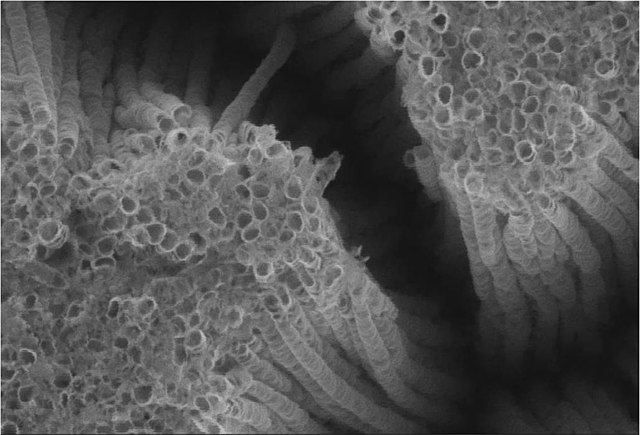A nanowire is a nanostructure in the form of a wire with the diameter of the order of a nanometre. More generally, nanowires can be defined as structures that have a thickness or diameter constrained to tens of nanometers or less and an unconstrained length. At these scales, quantum mechanical effects are important—which coined the term "quantum wires".
An SEM image of epitaxial nanowire heterostructures grown from catalytic gold nanoparticles
An SEM image of a 15 micrometer nickel wire
Stress-strain curve provides all the relevant mechanical properties including; tensile modulus, yield strength, ultimate tensile strength, and fracture strength
Titanium dioxide, also known as titanium(IV) oxide or titania, is the inorganic compound with the chemical formula TiO2. When used as a pigment, it is called titanium white, Pigment White 6 (PW6), or CI 77891. It is a white solid that is insoluble in water, although mineral forms can appear black. As a pigment, it has a wide range of applications, including paint, sunscreen, and food coloring. When used as a food coloring, it has E number E171. World production in 2014 exceeded 9 million tonnes. It has been estimated that titanium dioxide is used in two-thirds of all pigments, and pigments based on the oxide have been valued at a price of $13.2 billion.
Titanium dioxide
Synthetic single crystals of TiO2, ca. 2–3 mm in size, cut from a larger plate
Titanium oxide nanotubes, SEM image
Nanotubes of titanium dioxide (TiO2-Nt) obtained by electrochemical synthesis. The SEM image shows an array of vertical self-ordered TiO2-Nt with closed bottom ends of tubes.







